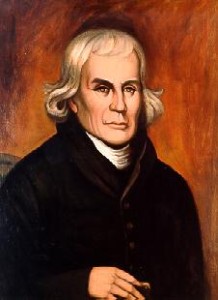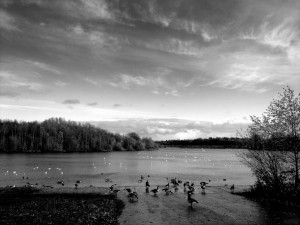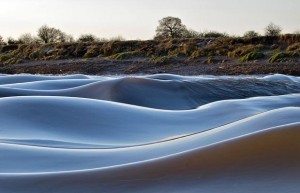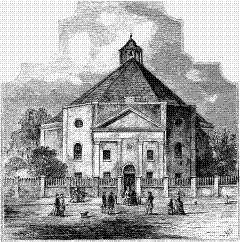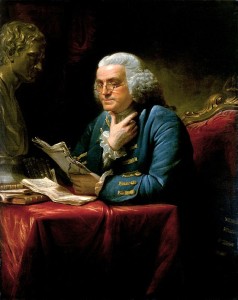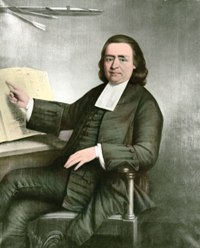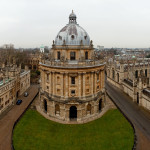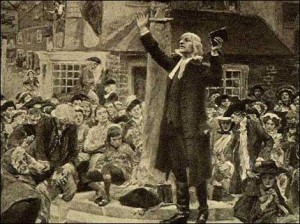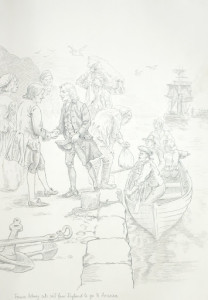Writing about the Francis Asbury circuits in England is a subject where very little exists. Previous authors have written what is documented. Men like John Wigger in, American Saint, his fabulous biography on Francis Asbury, give some details. The particulars offered are cultivated from the little that exists. Several articles and references in dusty books give some clue to Asbury’s travels. But the available information always seems inadequate.
If my nearly twenty years of researching the Francis Asbury circuits in England has revealed anything, Francis Asbury had the privilege of working as a traveling preacher in England during some extremely interesting times. The opening book in The Asbury Triptych Series seeks to give a snapshot of these times.
Francis Asbury Circuits in England: Scene from Black Country
I would like to begin my take on the Francis Asbury circuits in England with a scene from Black Country:
Quietly walking along the exterior wall of Joseph’s tool barn, Francis’s mother Elizabeth spies the first pods of his father Joseph’s bean plants. She marvels how easily the green growth pushes through, nearly a month early. The overcrowded plantings have allowed the vines to survive the harsh temperatures of the winter months. Their safety enhanced by the fact that the vines reside on the more temperate south side of the structure. She gently bends to talk to the numerous white buds and the tiny, emerging bean pods,
“March in the Midlands, a rather hazardous journey for fellows like yourself…”
From around the barn, Elizabeth can hear someone approaching. Their steps are fast and pounding. Her biggest fear, a drunk patron from the Malt Shovel tavern attached to their property. She turns and hears,
“Mother, Mother where are you?”
Stopping short of running into Elizabeth, Francis nearly knocks his mother over; the heel of her palm on the hard soil braces her from falling completely to the ground. With an alarmed huff she pushes herself to her feet and snaps toward her son,
“Francis, to what do I owe such a startling visit?”
“Developments, Amazing developments.”
“In mid-week?”
Francis’s mother is not used to seeing her twenty-year-old son during the week. He resides at the forge community where Francis works in the ironworking trade.
Francis pauses to catch his breath. He bends over; one hand on his knees and with the other, he wipes the sweat from his forehead. He rises from his crouched position to aid in his breathing; arching backward for a deeper breath. Elizabeth offers,
“Franky, have you run all the way from Sandwell?”
“Pastor Mather…”
His reply causes him to lose his breath; he places his hands on his hips to breathe deeply. Elizabeth coaxes,
“Yes, Pastor Mather…”
“Pastor Mather has asked of me. Asked of me – –
To preach. Locally.”
“Preach, a local preacher? Francis this is an amazing development.”
“Most assuredly. I am to start as soon as I can arrange – –
My schedule. Thomas Ault has agreed and Pastor Mather has given permission for Thomas to help with our band. I shall continue to conduct the West Bromwich meetings. In addition, I shall preach at least three to four times each week.
In time, three services on Sundays.”
The above scene from the book, Black Country, depicts Francis Asbury’s call to preach, the actual beginning of the Francis Asbury circuits in England. Previous to this spring season in 1765, Francis Asbury had spent nearly two years leading the class of faithful at the West Bromwich Wesleyan society. On occasion, Alexander Mather would call on Francis Asbury to preach or lead a class in the local area. In addition to his duties as leader of the two dozen individuals who regularly attended in West Bromwich, he also led the small band meeting made up of himself and five close friends. Those friends were Thomas Ault, James Mayo, James Bayley, Jabez Ault and Thomas Russell. In 1761, the band formed after Pastor Alexander Mather urged the sixteen-year-old Francis to form a band with his friends. Francis was occasionally preaching before this date. However much Francis Asbury preached and taught for the past two years, this call in March of 1765 by Scottish itinerant, Alexander Mather, signaled Francis Asbury’s official call into the Wesleyan itinerancy. It also signaled the beginning of the Francis Asbury’s circuits in England.
Francis Asbury Initial Circuit
For the next 11 months, the twenty-year-old Francis circulated his preaching and teaching efforts among the high round of the Staffordshire circuit. The circuit consisted of small Wesleyan societies in West Bromwich, Wednesbury, Walsall, Wolverhampton, and Billbrook. These areas were the foundation of Methodism in the Black Country.
During this initial phase of the Francis Asbury circuits in England, it is two Wesleyan preachers who offer the majority of the mentoring to the young preacher. The first is the already mentioned Scottish itinerant, Alexander Mather. The second is English preacher, James Glasbrook. These two teach Francis Asbury John Wesley’s basic requirements for a Wesleyan itinerant preacher.
In January of 1766, Francis Asbury is approached by Alexander Mather once again. The scene is one where Francis’s boss, the superintendent of the local forge where Francis works full time, and itinerant Mather pull Francis aside to discuss an urgent matter. The urgency is the fact that Mather is offering Francis Asbury the opportunity to quit the iron forge and join the Wesleyan movement as a full-time itinerant on trial. Almost without hesitation, the twenty-one-year-old Francis gratefully accepts.
During a meeting immediately following the appointment, Francis finds out all he is in for as a full-time traveling preacher. Glasbrook and Mather explain it well:
“Wesley is adamant, his preachers will read.”
“The list is extensive Fr’dancis. Wesley has accumulated quite the library.”
“Alex is correct; Wesley has stocked the shelves in London, Bristol and Newcastle. He aims to educate the masses through his traveling preachers. The somewhat challenging list includes several Divinity Books: the Bible, Wesley’s Bible-tracts, the works of Boehm and Francke. There are also practical books, on Natural Philosophy, Astronomy, History, Poetry and Latin Prose.”
At this point, Francis appears slightly overwhelmed. He loves to read, other than Wesley, the two writers mentioned he has never heard of. Unknown to Francis Asbury, Boehm was a German chaplain to the British Court earlier in the eighteenth-century and Francke a German Lutheran leader at Halle. Boehm informed John Wesley of Francke’s writings. Other than History, the additional subjects mentioned are foreign to a simple nailer from the West Midlands. James can detect Francis’s concern as the young preacher scrapes his top teeth on his bottom lip again. James continues,
“There are books on Latin Verse, Greek Prose, including the Greek New Testament, Greek Verse- including Homer’s Iliad, and the Hebrew Bible.”
Francis is silent. He once again lowers his view, staring at the wooden floor of the meeting room. His shoulders slightly droop. James emphasizes,
“Wesley requires five hours of reading each day.”
Francis raises a thought, when shall I visit the sick and the households? He voices,
“How then shall I visit the sick and each household if I am to spend the day reading? Shall it not benefit to read only one book, the Bible?”
The stocky, Scottish itinerant, Alexander Mather replies,
“Fr’dancis, you must be more than the Apostle Paul. For even he required Timothy to ‘bring the books, and the parchments.’ Are you more than Paul?”
Mather’s insightful questioning of Francis Asbury’s idea that all he has to read is the Bible is actually the result of John Wesley’s thorough training of his traveling preachers. Again, Glasbrook gives insight:
“Francis, we shall obtain reading materials for your travels. Oh Francis, I leave you with Wesley’s sage advice. When a young itinerant mentioned to John Wesley that he had no taste for reading, Wesley’s reply became conference record, ‘contract a taste for it by use, or return to your trade.’”
Return to your trade, that was the last thing on Francis’s mind. He loved to preach, but he loved more the opportunity to travel about.
For the next five months, the Francis Asbury circuits in England have Francis teamed with William Orpe, a young preacher who is John Wesley’s teacher of Hebrew at Wesley’s Kingswood School in Bristol. Francis Asbury and William Orpe handle the large Staffordshire circuit. They are clearly shorthanded; the circuit encompassing not only the Black Country towns of Birmingham, Wolverhampton, Willenhall, Walsall, Wednesbury, Darlaston and Billbrook, there is also an extended portion to the south in Worcestershire, Tewkesbury and Gloucestershire. An immensely large circuit spanning nearly 120 miles in a straight line. The pair does their best, Francis primarily in the Black Country, William handling Worcester and Gloucester.
April 1766, William and Francis have received word that there is an additional preacher assigned to Staffordshire. The plan is to meet him in Billbrook on the first day of May. Despite is happiness with his new career, Francis struggles that his efforts are somewhat limited. In his mind, he hasn’t ventured out. He is still living with his parents, he is preaching in places that have heard him preach for the last five years, some earlier when allowed to preach as a young teenager. He is expecting more travel and more responsibility. He looks forward to the meeting in Billbrook; perhaps I shall reassign to the low country. Despite Francis’s wishes, he is not assigned to the low round of the Staffordshire circuit. Instead, he is told to remain in the circuit that he has preached in since he was sixteen years of age. After his next preaching engagement in Billbrook, Francis Asbury does the unthinkable- he disregards his assignment and ventures out on his own.
Francis Asbury Disciplined for Wandering About
The subsequent letter from William Orpe, at the end of May in 1766, is one of the most famous letters in the experience of the Francis Asbury circuits in England. It is also not what Francis expected. In the letter, William disciplines Francis Asbury for abandoning his circuit. Francis wisely decides to continue the familiar circuit until the August conference signaling the end of summer in 1766.
The disciplining of Francis Asbury does not cease with William Orpe’s letter. In addition to disobeying William, Francis pushes Alexander Mather to overrule William and assign Francis to the low round of the Staffordshire circuit. Reluctantly, Mather gives Francis exactly what he wants just after the 1766 conference. For the next 12 months, the near-death experiences and the permeating doubts drive Francis Asbury to his lowest point emotionally. More than a year after forcing the Scottish itinerant to assign him on the low round, Francis finds himself face to face with Alexander Mather. The young and shaken Francis Asbury is relieved to find his mentor. He is also glad to hear that Alexander Mather is sending Francis home for a short break.
After a couple weeks home, Francis receives instruction to head for London.
In London, Francis once again finds several leading women involved with John Wesley’s outreach to the destitute of this capital city. He had met them on a previous preaching trip when he went to Ashbourne with Alexander Mather. These brave women who care for the homeless also represent the first women preachers of the Methodist movement. However, this information demands the writing of another article, Francis Asbury Women Preachers.
The London conference of 1767 sends Francis to his next stop on the Francis Asbury circuits in England tour, the Bedfordshire circuit.
In London, it seems likely that Francis Asbury meets George Whitefield when he attends worship at Whitefield’s Tabernacle. Tottenham Court Road Chapel, the “Tabernacle” as the locals refer to it, is the religious structure erected by George Whitefield in response to his ejection from the chapel in Long Acre by the Vicar of St. Martin’s–in-the-Fields. The Vicar holds no favor toward the radical evangelical efforts and success of Whitefield. Built of brick in 1756, the Whitefield faithful within four years render the 70 feet by 70 feet square building too small.
Through the donation of Selina, the Countess of Huntingdon, Whitefield arranges for the building to receive an octagonal extension toward the front. Soon, other private donations from the Tottenham congregation erect 12 almshouses and a chapel house adjacent to the Tabernacle. The popularity of the Tabernacle soon results in regular guests like the Prince of Wales, and his family. In addition to Royals, regular attendees list the Scottish philosopher David Hume; the son of the Prime Minister, an art historian and man of letters Horace Walpole and actor David Garrick. Francis would have had opportunity to see some of these guests at the Tabernacle.
At the time of Francis Asbury’s arrival to London, George Whitefield is entertaining several special guests. With George Whitefield at the Whitefield home is American leader Benjamin Franklin. Franklin was staying in London at the time, his friendship with Whitefield established years earlier during one of Whitefield’s trips to America.
Even more special than the presence of Benjamin Franklin are the additional American guests who are visiting with George Whitefield. A Mohegan Indian named Samson Occum leads the exceptional visitors from the colony of Connecticut. The other men with George Whitefield are, Lord Dartmouth, merchant Dennis De Bert, and Indian Samson Occum’s traveling companion from America, Princeton College Presbyterian minister Nathaniel Whitaker.
Occum and Whitaker are in the middle of a two-year stay in England. Their intention is to raise money for their Indian Charity School in Lebanon, Connecticut. Eleazar Wheelock, a 1733 graduate of Yale owns the institution. The noted preacher and educator is a determined man in his efforts to educate the young Native American children of the eastern border of America. Currently, Occum and Whitaker are well on their way to acquire more than 10,000 pounds, the equivalent of two-million dollars in twenty-first century money. Occum’s companions raise the funds that will eventually launch Dartmouth College. Spending a couple months in London before the August conference, it is very likely that Francis Asbury not only heard Samson Occum speak at The Tabernacle, but also had opportunity to meet this unique group.
Francis Asbury in the Bedfordshire Circuit
August 18, 1767 the conference in London begins at John and Charles Wesley’s Foundry Church. At this conference, John Wesley assigns Francis Asbury to the sprawling Bedfordshire circuit. In addition to Bedfordshire, Francis is officially admitted on trial and teamed up with Bedfordshire native, James Glasbrook. The young itinerant from Staffordshire welcomes the partnership of Glasbrook.
The next stop on the Francis Asbury circuits in England tour has Glasbrook and Asbury preaching the rambling Bedfordshire circuit and its several promising locations. Different from the large and lively London society with its magnificent chapels, these rural spots support small intimate classes of the country-side faithful. The key locations on this portion of the Francis Asbury circuits in England are Hertford, Luton, Sundon, Millbrook, Bedford, Clifton and North Hampton. On Francis Asbury’s return to the Bedfordshire circuit in 1770, he will also attend the Bedfordshire towns of Towcester, Weedon and Whittlebury.
In lieu of attending the 1768 conference in Bristol, Francis is given instructions to wait in London. There John Wesley will send word of Francis’s next assignment.
Francis Asbury’s short stopover in London occurs at the same time that an American visitor from Philadelphia is staying with George Whitefield. This young man will eventually appear as a dear friend to Francis Asbury when he ministers in Philadelphia. One has to speculate that the future relationship had to have its beginnings while Francis Asbury was awaiting his 1768 assignment in London attending both churches of Whitefield and the Wesleys. The young visitor from America was Dr. Benjamin Rush. Rush was an invited guest by Whitefield after young Benjamin finished some medical studies in Edinburgh, Scotland. In Black Country, I have chosen to create that encounter between Dr. Benjamin Rush and Francis Asbury. The two would have been the same age, twenty-three years old and would have attended services at both George Whitefield’s Tabernacle and John Wesley’s Foundry Church. This encounter can easily explain the future relationship in Philadelphia between Francis Asbury and Dr. Benjamin Rush.
Francis Asbury and the Colchester Circuit
The word from the Bristol conference in August of 1768 is not good. John Wesley assigns Francis to the only circuit tougher than the Staffordshire low Round. The notification comes with unique instructions of how to deal with smugglers. John Wesley’s pamphlet, A Word to a Smuggler, is handed to Asbury. Francis is familiar with the writing. It was read at the 1767 London conference. John Wesley’s messengers are adamant; preach against the evil act. The next stop on the Francis Asbury circuits in England tour is the untamed coastline of the Colchester circuit.
The 50 mile trip from London to Colchester once again places Francis within the betterment of an ancient Roman Road. The track leaves London heading to the north east. The roadway with the characteristic camber crafted for proper drainage, travels through the towns of Ilford, Chadwell, Rumford, continues northeast passing through Burntwood and Shenfield, on to Ingerstone, Chelmsford, Boreham, Hatfield Poverel, Witham, Keldon, east of Feering, Marks Tay, west of the Stanway heath, finally at the 50 mile mark into Colchester. From Colchester, it is a nine mile ride through Ardley and Lawford to Francis’s first stop in Maningtree.
Francis Asbury will preach along the southern coastline of the River Stour, from Maningtree to Harwich. As beautiful as the scenery is, the area sours with rampant smuggling. The River Stour is a wide waterway, running mostly east to west and connecting directly to the southern tip of the North Sea where it meets the northern tip of the English Channel, one-hundred miles due west of Belgium and the Netherlands. Along the river’s route, the shallow-sloping shorelines gently run for several yards to the dry ledge above.
Perhaps out of worry for the young itinerant and the dangerous territory he travels, after two months on the Colchester circuit, Francis Asbury receives word to relocate to the Wiltshire circuit.
Francis Asbury and the Wiltshire Circuit
The one-hundred-forty-mile journey from Colchester to Salisbury in Wiltshire is a difficult trip. Emotionally for Francis, it has been almost two years since he was home. His relationship with his female friend Nancy Brookes is not doing well. Letters from his mother back home beg for him to return. In the face of fierce opposition, Francis’s self-doubt of his abilities as a preacher furthers this emotional descent.
Also opposing Francis Asbury is the change in seasons. The end of the month of October is clearly a month of change in southern England. Autumn is departing and the stiff months of winter begin to emerge. The cold discourages Francis; he stresses over his relationship with Nancy. He longs to talk to his father, or Pastor Mather or Glasbrook. Each of these would offer sound advice. In this challenging environment, Francis trudges on toward the south of England.
The three main cities of the Wiltshire circuit are Salisbury, Winchester and Portsmouth. In Portsmouth, it is highly likely that Francis began his study of Hebrew. In Black Country, I have introduced the possibility through the large Jewish settlement that coexisted with the Portsmouth Methodists.
The Jewish community in Portsmouth is an interesting group. Clearly the result of the English Civil War one-hundred years before and the proclamation by the victorious Oliver Cromwell lifting the four-hundred-year ban on Jewish residents in England. The new arrivals were mostly young men drawn to the busy seaport towns of Dover, Plymouth, Bristol, Liverpool, Hull, Chatham and Portsmouth. In Portsmouth, the majority of the Jewish settlers reside in Portsea, also known as Portsmouth Common, the same area as the Methodists. The men mostly are traders and silversmiths, selling their wares to the lower ranks on board the numerous ships of the British Navy.
In Salisbury and Winchester, two large cathedrals tower above the historic cities. In Salisbury, the cathedral houses a copy of the document from the thirteenth-century, the Magna Carta. In Winchester, ancient roads branch to all parts of England, a defense mechanism designed by King Alfred the Great to provide military support to the English populace. In both of these settlements, Francis Asbury preaches. For the next ten months, Francis Asbury remains on the Wiltshire circuit.
August 10, 1769, word from the Leeds Conference arrives for Francis Asbury in Salisbury. In the chapel on St. Edmund’s Church Street, several of the local families surround Francis. They are saddened to see the young man leave. They have grown fond of him. Word from John Wesley is that the next circuit on the Francis Asbury circuits in England tour is Oxfordshire. There he teams up with his friend from Staffordshire, Richard Whatcoat. Francis Asbury heads for the town of Oxford.
Francis Asbury in Oxford Circuit
In Oxford, Francis and Richard occasionally preach from the St. Giles Church. St. Giles Church is a structure built in the Norman style. It sits north of the end of St. Giles Street- where it forks into two different roads. The church aligns east and west between Banbury and Woodstock Roads. Despite civil war era damage to the south aisle of the structure, the building is in relatively good condition. The beautifully crafted architectural windows continue to draw a viewer’s attention. Keeping with the custom of churches dedicated to St. Giles, the location of the church in Oxford is outside and away from town, north of the city wall.
As they are young men themselves, it seems obvious that the pair would have had dealings with some of the local students studying to be Anglican priests. Francis Asbury and Richard Whatcoat remain in Oxford until Christmas. They both assign to preach the Bedfordshire circuit in the new year.
Francis Asbury and Richard Whatcoat again in Bedfordshire Circuit
January of 1770, the Francis Asbury circuits in England tour continues with a return trip to Bedfordshire. In addition to returning to Northampton, Francis will travel to the smaller Wesleyan societies in Towcester and Whittlebury. He also spends time in Weedon. For the next eight months, Francis Asbury will preach on the western portion of the Bedfordshire circuit. Despite the assignment, one detour during this time occurs.
Sunday, March 18, 1770, the blowing snow will not lessen. The slashing waves of tight powder billow like a furled blanket suddenly unraveled and snapped in every direction. With each thrust of weather, one expects the rolling effect to end in a loud pop. It doesn’t. The thrashing wind doesn’t offer an explosive snap. Instead, it bellows its low, hollow cry of anguish. This cannot be good, this is the thought of John Wesley, as he makes his way on horseback from Birmingham. The 4 mile trip to Bromwich Heath, the home society of Francis Asbury, exasperates from the hostile weather.
At 1:30 in the afternoon, John Wesley finally arrives to the Methodist Meeting house on the heath. He ties his horse among the several that already latch to the downwind side of the building. There is a little roof overhang that provides limited shelter for the animals. Walking back to the front of the building, Wesley pushes the front door open and makes his way to the stairs. Upstairs, he can hear the voices of a multitude. He silently whispers a prayer for divine assistance in his preaching. Ascending the steps, the stairwell is dark and fusty. The moist smell occupies his thoughts until an errant cobweb decides to lower in his path. Brushing away the dangling weave, he proceeds to the second floor meeting room.
At the top of the stairs, he moves to push open the door to the room. It won’t budge. Knocking on the oaken slab, several gentlemen open the door. To their surprise, Wesley stands with Bible in hand,
“May I enter?”
“You may if there was room. Seems the space is far from adequate for the likes of you Mr. Wesley.”
“Very well. Is there a place…?”
“Mr. Wesley, those that are here represent only half who wish to attend. As strongly as we disagree with the solution, the only viable option seems outdoors, near the heath.”
“Very well. Please, if someone would kindly accompany me to the intended place, I shall begin.”
The men scramble about, each volunteering his service. Wesley and his three escorts descend the stairs as the word shares with the rest of the room’s inhabitants,
“Wesley shall preach outdoors.”
The news of John Wesley preaching in West Bromwich inspires Francis Asbury to return home. After nearly three years away, his family and friends once again embrace him.
After his visit home, Francis Asbury returns to the western portion of the Bedfordshire circuit. In addition to Towcester and Whittlebury, he continues to preach in the town of Weedon.
August 7, 1770, the London conference opens in its usual fashion. The Foundry Chapel is decorated with evergreen boughs, hand selected and cut by many of the local men. Their wives and daughters have lovingly placed the greenery around the sanctuary. Many of these hang from the second level balconies which border both sides of the main room. From outside, the joyous melodies of acappella singing flows from the entry doors which stand open. Inside, the singing by the locals joins the robust voices of the traveling preachers. The weary itinerants endlessly pour in from Ireland, Scotland and England. Twelve women who unofficially preach in the Wesleyan movement are here also. Obviously present because of the rumor that Wesley will address the issue of women preaching. With them is their vocal leader, Sarah Crosby. She gathers several of the arriving itinerants, eagerly inquiring if they have any word on John Wesley’s plans. None have an answer.
The 1770 conference was controversial for two reasons, one of which was the issue of women preachers. The other issue was brought about inadvertently by John Wesley himself. Several of his comments at the end of conference were mistaken for a works doctrine. They thought he was saying that human works were required for salvation. The controversy nearly sinks the Wesleyan movement. Aside from the two issues above, the conference for Francis Asbury introduces a return assignment in the Francis Asbury circuits in England tour. John Wesley once again assigns Francis Asbury to Wiltshire.
Francis Asbury Returns to Wiltshire Circuit
It is this assignment where Francis Asbury is abandoned by his assigned helper. The somewhat melancholy John Catermole exits the Wiltshire circuit after his dealing with a disorderly lay leader who threatens violence to Catermole and Asbury.
A visit by John Wesley to the struggling Wiltshire circuit results in John Wesley asking Francis Asbury to visit a tiny island on the southern coast of England. Not much has been written about Francis Asbury’s visit to the Isle of Wight. What little information there is, places Francis Asbury’s visit to the island at about the time of John Wesley’s preaching in Wiltshire.
It is also on this portion of the Francis Asbury circuits in England tour that Francis Asbury learns of the unexpected death of George Whitefield.
August of 1771, it is at this conference in Bristol where Francis Asbury volunteers for the circuit simply called, America.

